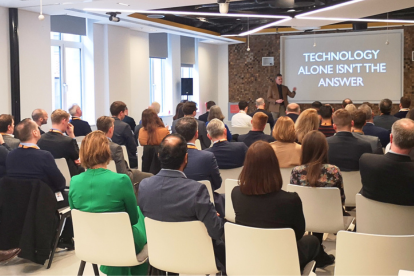Expert: Matthew Baldwin, Lead Field Sales Executive, SS&C Technologies Facilitator: Ben Hammond, the Lang cat
Headlines:
- The operational challenges faced by financial services firms include disjointed operations and data silos, manual workflows, lack of real-time data access, and increasing regulatory reporting requirements
- The need for a data-driven approach, strong leadership, and iterative implementation to drive operational efficiency and innovation while mitigating risks
Discussion points:
Operational Challenges
The operational challenges faced by financial services firms, including disjointed operations and data silos, manual workflows, lack of real-time data access, and increasing regulatory reporting requirements.
The impact of these challenges on efficiency, innovation, and client experience. The ‘spaghetti junction’ of systems and the reliance on legacy technologies were identified as root causes, leading to data reconciliation issues, system maintenance overhead, and limited self-service capabilities.
Innovative Technologies
The innovative technologies being invested in or experimented with, such as AI, machine learning, natural language processing, and RPA.
The potential benefits of these technologies in automating processes, improving data analysis, and enhancing user experience. Examples included AI-driven classification and clustering, generative AI for report narration, and natural language understanding for conversational interfaces.
The use of RPA for automating repetitive tasks was also highlighted, with one mentioning their organization's deployment of over 1,000 digital workers, resulting in significant cost savings.
Best-of-Breed vs. Comprehensive Solutions
The trade-offs between best-of-breed solutions and comprehensive, integrated platforms. While best-of-breed solutions offer specialized functionality, they often lead to data silos and reconciliation challenges. Comprehensive solutions, on the other hand, provide a single source of truth and consistent data models but may lack specialized features.
The importance of user experience and the potential for AI-driven virtual advisers to bridge the gap between specialised functionality and user-friendly interfaces.
Implementation Challenges
The challenges associated with implementing new technologies, such as scope creep, lack of leadership sponsorship, and resistance to change from advisers and staff.
The importance of iterative implementation, starting with pilot programmes and leveraging champions to drive adoption.
The regulatory concerns surrounding AI-driven virtual advisers and the potential for systemic advice events, emphasizing the need for robust risk management and gradual transition.
Key takeaways:
- Conduct pilot programs to test and demonstrate the benefits of new technologies, leveraging champions to drive adoption among advisers and staff
- Develop a comprehensive data strategy to establish a single source of truth and enable effective integration of innovative technologies
- Evaluate the trade-offs between best-of-breed and comprehensive solutions, considering factors such as user experience, data integration, and specialized functionality
- Engage with regulatory bodies and industry stakeholders to address concerns around AI-driven virtual advisers and develop a risk management framework for their gradual implementation
- Foster a culture of innovation and continuous improvement by providing training and support to advisers and staff, addressing resistance to change and promoting the value of data-driven decision-making


